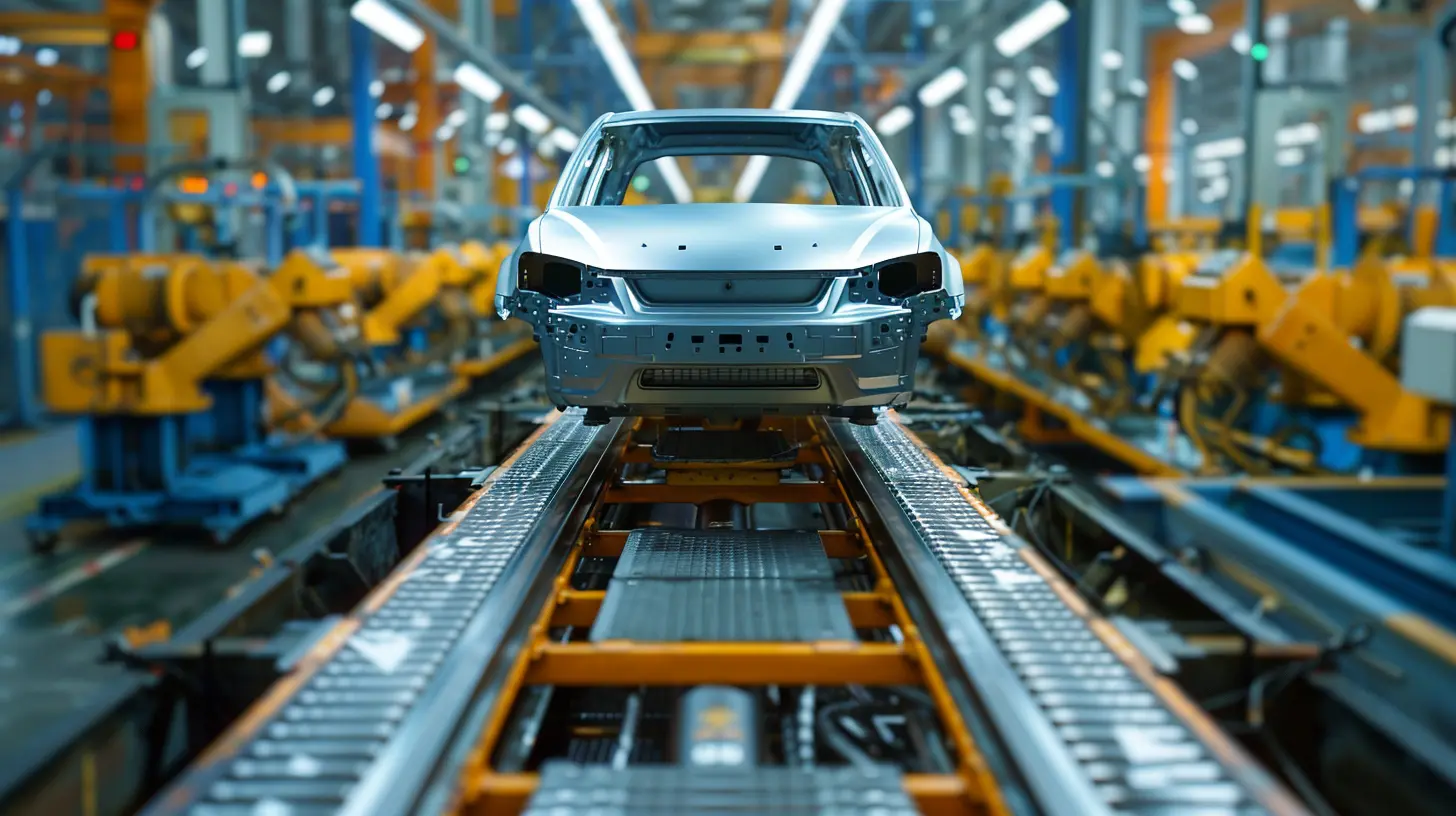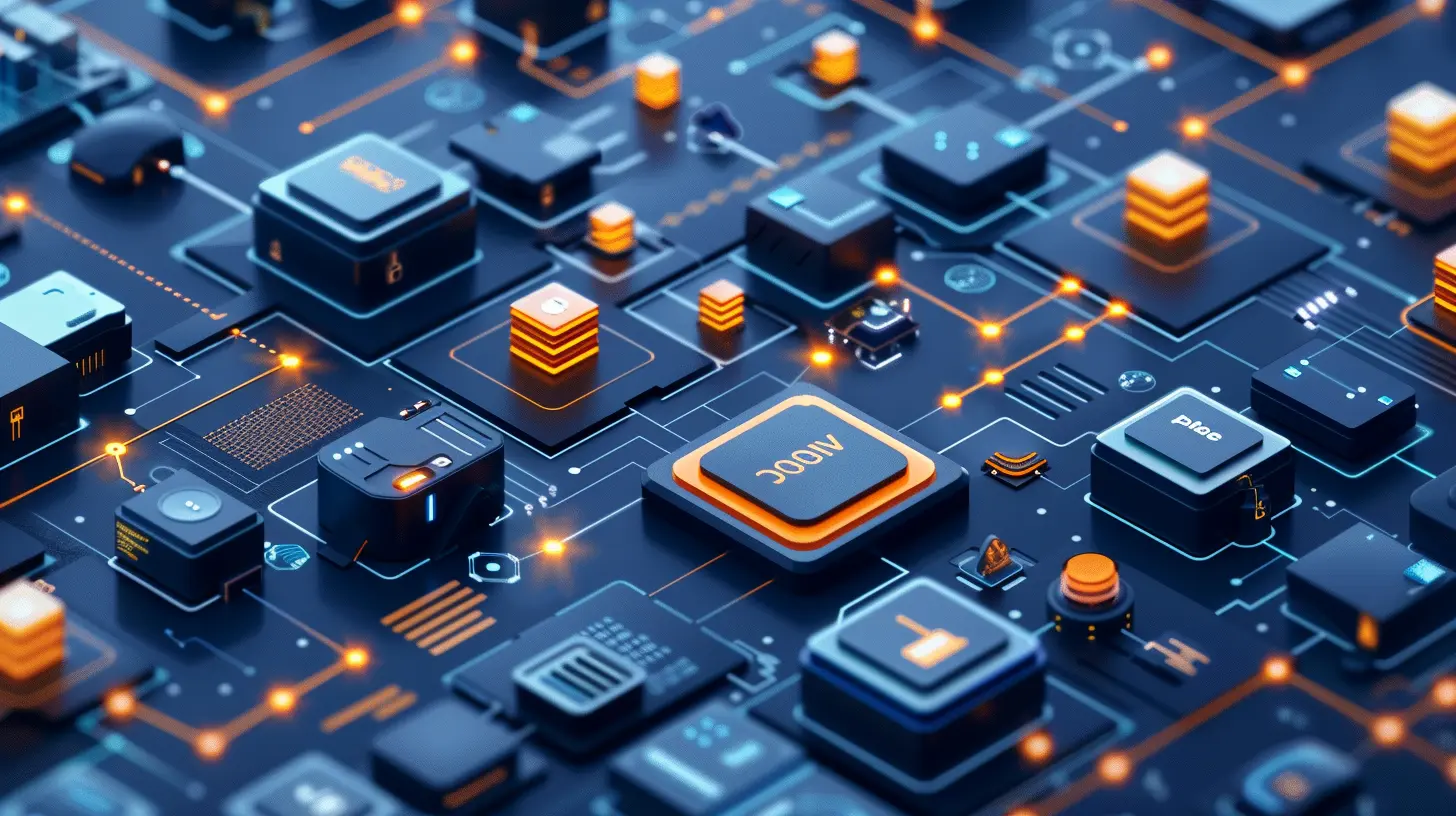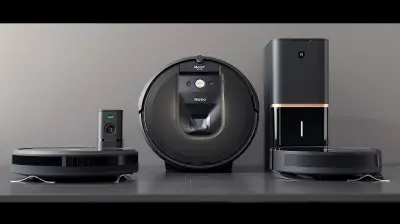IoT in Manufacturing: The Key to Industry 4.0
20 August 2025
The fourth industrial revolution, aka Industry 4.0, is already knocking at the factory gates. And guess what? The Internet of Things (IoT) just might be holding the keys. With sensors humming, machines talking, and data flowing like never before, IoT is turning traditional manufacturing into something straight out of a sci-fi movie. But it’s happening now — no time machines needed.
Let’s break down how IoT is reshaping manufacturing, why it matters so much, and why it could be the difference between a business thriving or simply surviving.
What Is IoT (And Why Should Manufacturers Care)?
Think of IoT as a network of "smart" devices — sensors, machines, systems — all connected and communicating in real-time. It’s like giving your manufacturing equipment a voice and ears. Now, imagine being able to listen in on that conversation. That's where the magic starts.In manufacturing, IoT lets you track operations, monitor equipment health, control processes remotely, collect invaluable data, and take action — fast.
Still asking why it matters?
Because knowing what’s happening inside your factory in real-time gives you the power to fix problems before they grow, improve efficiency, reduce downtime, and even cut costs. What used to be reactive (fix it when it breaks) is now proactive (let’s prevent it from breaking altogether).
The Evolution to Industry 4.0
Before we get ahead of ourselves, let’s zoom out. Industry 4.0 didn’t just show up yesterday.- Industry 1.0 gave us mechanization and steam power.
- Industry 2.0 brought electricity and mass production.
- Industry 3.0 introduced computers and automation.
- Industry 4.0? It's all about cyber-physical systems, data, machine learning, and — you guessed it — IoT.
In short, Industry 4.0 connects the digital and physical worlds.
IoT is the bridge making that connection seamless. It’s no longer just about having machines. It’s about having smart machines that talk, learn, and adapt.
How IoT Is Revolutionizing Manufacturing
Let’s dive into the juicy stuff. How exactly is IoT changing the game on factory floors?1. Real-Time Monitoring (Because Waiting Is So Last Season)
With IoT, sensors are constantly feeding data back to a central system. Nothing hides. You know the temperature of the furnace, the speed of the conveyor belt, and even how long a machine's been running.That data translates into real-time visibility — which means quicker decisions, faster responses, and fewer surprises.
2. Predictive Maintenance (Breakdowns Are Out, Uptime Is In)
Ever had a machine go down right in the middle of a critical production run? Painful, right?IoT flips the script. Instead of waiting for equipment to fail, sensors keep an eye (well, a digital eye) on everything — vibrations, heat, pressure. If something looks off, it sends out a warning.
You fix it before it breaks. That’s predictive maintenance. It saves money, time, and lots of headaches.
3. Inventory Management That Practically Manages Itself
IoT-powered systems can track inventory levels, predict when materials will run out, and even automate reordering. It’s like giving your stockroom a brain.The result? No more overstocking. No more stockouts. Just smooth operations.
4. Energy Efficiency That Pays for Itself
Energy bills out of control? IoT can help with that, too.Smart energy management measures usage in real-time and identifies inefficient processes. You spot patterns. You tweak settings. You save money.
And hey, it’s better for the planet, too.
5. Improved Product Quality (Because Consistency Is King)
Sensors can monitor production parameters like temperature, pressure, and humidity. If anything drifts from the desired range, the system adjusts automatically — or alerts someone to step in.That means fewer defects, higher quality, and happier customers.
6. Supply Chain Visibility (Finally!)
IoT doesn’t stop at the factory gates.Track shipments, monitor conditions during transport, and get real-time updates from suppliers. Everyone’s connected. Everyone’s accountable.
No more wondering where that critical part disappeared to — you’ll know.
The Human Side of IoT: Making Life Easier on the Floor
Let’s be real for a sec — technology talk can feel a bit robotic. But here’s the thing: IoT isn’t about replacing people. It’s about helping them.Operators get clear dashboards instead of cryptic spreadsheets.
Maintenance teams get notified before machines fail, instead of scrambling when they do.
Managers get insights, not just data dumps.
IoT empowers people to do their jobs better, faster, and with less stress. And in an industry known for pressure, that’s a big deal.
Challenges? Sure — But They're Worth It
It’s not all smooth sailing. Adopting IoT in manufacturing comes with some bumps on the road. Let’s not sugarcoat it.Data Overload
When every machine starts talking, you get a LOT of data. And if you don’t have the right tools to make sense of it all, it’s like trying to drink from a firehose. Overwhelming, right?Security Risks
More connections mean more entry points for cyber threats. It’s critical to have solid security protocols. You wouldn’t leave your factory door wide open at night. Don’t let your digital doors swing open either.Upfront Costs
Installing sensors, buying software, training teams — it adds up. But here’s a gentle reminder: the return on investment can be huge. It’s not a cost. It’s an investment in future-proofing your business.Real-World Wins: Companies Already Killing It With IoT
Still not sure if IoT is worth it? Let’s look at some examples.General Electric (GE)
GE uses IoT to analyze data from its machines and equipment. That means quicker diagnostics, predictive maintenance, and improved efficiency across plants. One of their wind turbines can generate 500 data points per second. Talk about next-level insight.Bosch
Bosch has embraced IoT in its own factories by using sensors and data analytics to monitor quality and optimize workflows. They reduced machine downtime by up to 25% and significantly improved product traceability.Harley-Davidson
Yep, even the iconic motorcycle brand is all in. By digitizing their production process, they cut down a 21-day production cycle to just six hours. That’s not a typo. Six. Hours.Getting Started With IoT in Manufacturing
Excited but not sure where to begin? Don’t worry — you build this castle one brick at a time.Start Small
You don’t need to revamp your entire plant overnight. Pick one production line. Add a couple of sensors. Get used to the data. Build from there.Choose the Right Partners
Work with vendors who understand your industry. You need more than just tech — you need tech that fits.Train Your Team
Even the best systems aren’t worth much if your people aren’t on board. Make sure your team knows how to use the tools. Show them how it makes their jobs easier.Focus on ROI
Track your results early and often. Show wins — even small ones. That builds momentum and buy-in across the company.The Future? It’s Already Here
Let’s zoom out again. IoT is more than just a buzzword — it’s the foundation of a smarter, leaner, more agile manufacturing future. And the future isn’t tomorrow. It’s today.Yes, the tech is complex. But the goal is simple: do more with less. Make smarter decisions. Keep your equipment healthy. Help your people work better.
In a world where competition is fierce and downtime is deadly, IoT isn’t just nice to have. It’s a must-have.
So, whether you’re a small shop thinking about adding a few sensors or a global player looking to go fully smart, one thing’s clear:
IoT is the key to Industry 4.0. And trust me, you want to be on the right side of that door.
Final Thoughts
Technology can be intimidating. All the jargon, all the options, all the change. But at its heart, IoT in manufacturing is about something pretty human — solving problems, making life easier, building better.The best part? You don’t have to do it all at once. Start small. Stay curious. Keep pushing forward. The future is connected. And manufacturing? It’s about to get a whole lot smarter.
all images in this post were generated using AI tools
Category:
Iot DevicesAuthor:

Vincent Hubbard
Discussion
rate this article
1 comments
Claire Good
This article highlights the transformative role of IoT in manufacturing, emphasizing its importance in driving Industry 4.0. Embracing smart technologies can significantly enhance efficiency, productivity, and innovation in the manufacturing sector.
September 5, 2025 at 12:31 PM

Vincent Hubbard
Thank you for your insightful comment! I'm glad you found the article highlights the crucial role of IoT in advancing Industry 4.0. Embracing these technologies truly is vital for the future of manufacturing.


